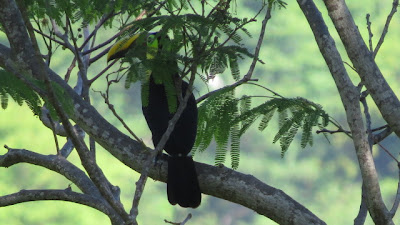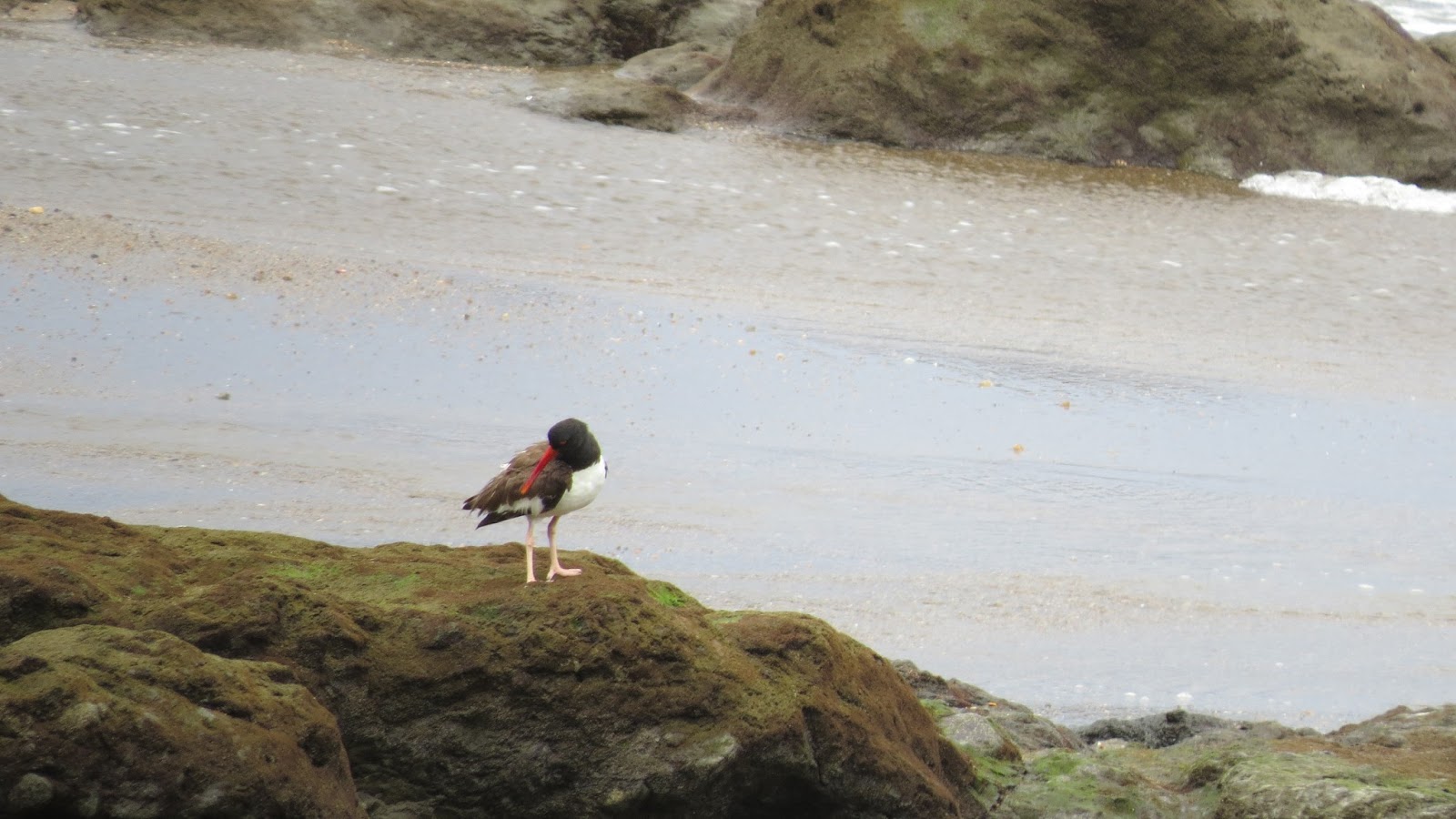
and Chestnut-mandibled Toucans.
 |
| Wall minus luggage |

 |
| Hummingbirds in background! |
 |
| Great-tailed Grackle - seen everywhere - prettier than our crows |
 |
| White Hawk |
 |
| Mantled Howler monkey next to our balcony in primary rainforest |
 |
| 8cm crabs like to come indoors. |
 |
| Secondary growth at Shelter from the Storm |
 |
| At the Rancho (bar area) next to the pool, Daryl makes great margaritas. |
Our villa was between the small towns of Uvita and Dominical, Uvita being the best place for shopping and commerce. Between headlands every few kilometres were beaches, pretty from a distance but not attractive to Aussies for 3 reasons - brown rocky sand, poor surf and mostly requiring money for 'safe' parking (protection against thieves). We had intended to visit Manuel Antonio 45 minutes north, famous for animals in the National Park bordering the ocean, for snorkeling and beach. However, we drove the very winding road down there en route to Uvita and found the place appalling. Tourist places lined the road and as we got closer to the beach, touts accosted the car, wanting us to pay to park at their place. We were even stopped at a barricade by the Tourist Police, just wanting to give us a brochure about safety! We could not see the park or beach from the road to judge whether or not parking was a good idea. It may be worth the hassle but we did not find out.
So we set out to explore our immediate options, paid $5 each to enter a National Park beach, walk along it for 10 minutes and back to our car. The money did entitle us to enter other beaches.
It was high tide when we visited Playa Uvita so we couldn't see the Whale's Tail formation (Ballena).
But we did see a White Ibis and a crab.
There were cabins, camping spots and a walk along the foreshore at this beach in Ballena National Park.
Dominical Beach had a lifesaver, a notice warning of rips, a strong rip, some would-be surfers, no charge for parking and a line of outdoor shops.

 |
| 60 cm lizard on road at beach |
On our last day we went to Hacienda Baru for a hike uphill at 7:30am. We learned that attempts to produce cocoa in Costa Rica have been thwarted by a fungus attacking mature pods. Green and black poison dart frogs were everywhere, too fast to photograph.Saw our first Fiery-billed Aracari and, best of all, had a really close encounter with a 3-toed sloth and baby.
Later, we drove around the Dominical area beside an estuary and took our first photo of the BeGo rental car which we grew to love.
Our last day in Costa Rica was spent driving from Uvita to Alajuela. We were advised to drive the coastal route to the airport. Instead, we took the untravelled (for us) winding mountain road, which found us at 3800m stopping to look at the almost alpine scenery - and noticing the puddle of coolant under the car. Then the drive through San Jose came horribly unstuck. Our map showed an eastern freeway which Daryl advised was yet to be built. He was right - again! David had put a route into the GPS which he stubbornly refused to change. I cried as we went around the same roads over and over again in heavy traffic. Eventually David took charge and drove with GPS on his knee, finding his way to Alajuela somehow.
Fortunately, we had hours to spare for all these misadventures and are still happily married.
Hotel Pura Vida had no vacancy so we spent the night at Alegria, a very comfortable B & B, easy to find if you do NOT follow the GPS waypoints given on their website. We found ourselves out in the countryside and had to retrace our steps to use the road directions. Even then, the GREEN fence outside looks grey. www.alegriabandb.com












+BeGo++Dominical.JPG)























